You’ve already read our article on which jack you should buy for your lifted truck.
Now, you are sitting there with your lifted truck and your new jack, trying to raise it high enough to change a tire.
Jacking a lifted truck is slightly different from jacking a regular truck, especially compared to jacking a smaller pickup.
Here is a step-by-step breakdown of how to jack a lifted truck from start to finish if this is your first time trying to jack up a lifted truck. Lifted trucks have high ground clearance, which provides excellent visibility and better off-roading.
I was hanging out at my buddy’s house last week, and we were replacing his front drive axle with a new Dana axle. It got me thinking that a bunch of my readers might appreciate a rundown on getting their truck high enough off the ground to do these types of repairs.
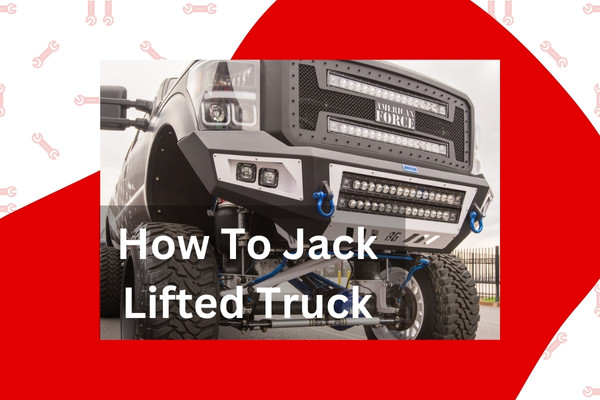
What Tools Do You Need for Jacking Up a Lifted Truck?
Like jacking a regular truck, jacking up a lifted truck means gathering three necessary tools beforehand.
Specifically, you’ll need the following:
- A jack
- Wheel chocks
- Jack stands
Let’s start with the jack. If you aren’t already familiar, a jack is a piece of equipment that lifts your truck into the air by lifting it from a stable point on the vehicle’s undercarriage. You can find many types of jacks on the market, but the three most common are hydraulic trolley jacks, Bottle jacks, and scissor jacks. You can alternatively use a hi-lift jack, trail jack, or air jack. This guide will assume you use hydraulic floor jacks.
Hydraulic jacks are the most popular as they can lift heavy loads with a smooth pumping motion. Ensure that your hydraulic jack is in good condition – specifically, it’s not leaking out any oil or foamy liquid and holding pressure well.
Next, you’ll need a wheel chock. This is a small piece of wood or another bit of hard plastic that stops the wheels of your truck from rolling away. You can get these at auto part stores and some general stores like Target or Walmart. Alternatively, you can use a chunk of cinder block or a 4×4 piece of wood.
Last is the jack stand. You may need several of these to jack up a lifted truck. A jack stand holds the truck’s weight after the jack lifts it. Jack stands to look like tripod stands and capably support your vehicle’s weight, so you’re safe while you work. You should never let a jack solely support your truck; always use jack stands for added safety.
Aside from these tools, be sure to gather anything else you may need to complete your maintenance task. For instance, if you are jacking up a lifted truck to change a tire, you’ll also need an impact wrench, a lug or deep socket wrench, and a spare tire.
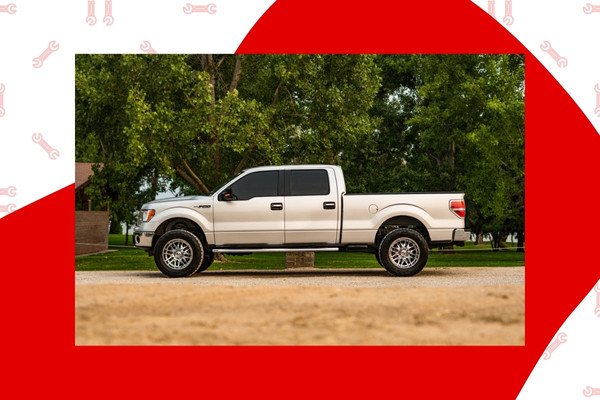
How to Jack a Lifted Truck Safely: Step-by-Step Guide
Now let’s break down how to jack a lifted truck safely step-by-step.
Safety Is a must. Always work safely. Jacking up any vehicle, especially a heavy vehicle like a lifted truck, can be dangerous if you don’t do so carefully. After all, you’re lifting thousands of pounds into the air to go underneath the vehicle and do vital maintenance work.
You have to be especially careful when jacking a lifted truck. To be safe, follow these tips:
- Always use a jack with a load capacity rated for more than the weight of your truck. You can find the weight of your truck in your vehicle’s owner’s manual and the load capacity for your jack in the manual for that tool.
- Always use a quality jack that you can trust, not an old, poorly-maintained jack that doesn’t work very well.
- Always have enough high-capacity jack stands that can hold your truck’s weight. Just like the jack itself, the jack stands will have to do a lot of heavy lifting (no pun intended), and they need to be able to carry your truck’s full weight, plus any cargo.
Try to estimate the cargo of your lifted truck before deciding on the jack and jack stands to use for your task.
1. Find an Area for Jacking the Truck
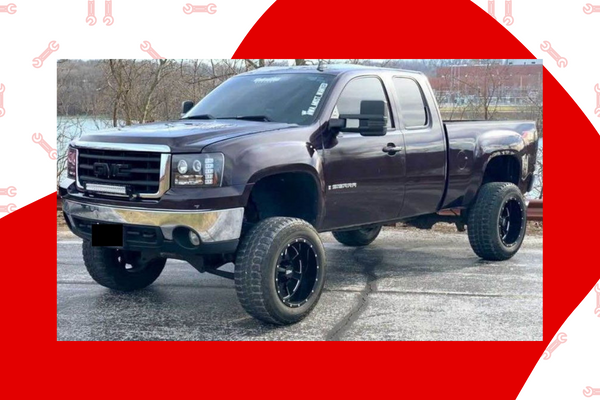
Next, find the right area to jack up your lifted truck. Lifted trucks are pretty large, not to mention taller than usual! Because of this, you may not be able to jack your lifted truck in your garage like you can jack a smaller car like a sedan.
You need a level surface for raising your truck. The best ground would be hard concrete or asphalt, where you can park your truck and have enough room around the truck to do your work. Only jack your lifted truck up in your garage if you have a high enough ceiling for the job.
Wherever you work, just make sure the ground is level and hard. Soft ground can cause your jack tripods to tip over, which can cause disastrous injuries or other problems. Make sure to jack up your lifted truck on an uneven surface.
To prep your lifted truck for jacking, bring it to the right spot, put the transmission in Park, and turn it off. Don’t forget to shift to first gear if your truck uses a manual gearbox. Engage the handbrake no matter what.
2. How to Chock the Wheels of a Lifted Truck?
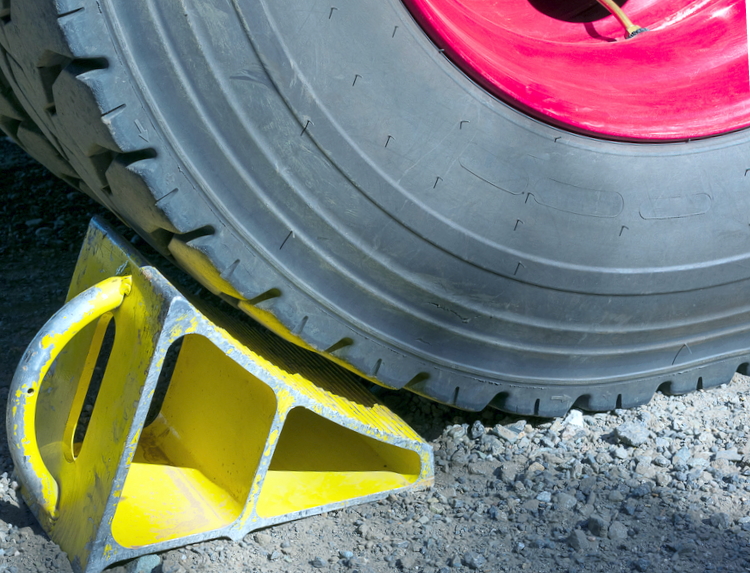
Now it’s time to make sure the wheels of your lifted truck are secure. The chocks stop the wheels from rolling – even if the ground appears flat, it might have a slight incline.
Be sure to use at least two chocks to jack your lifted truck. Chock the opposing side of your truck compared to the one you want to raise first. For instance, if you want to raise your truck’s front side, put your chocks on the truck’s back wheels and under the front wheels if you want to lift the rear side.
Remember, you need at least one tire chock to lift your truck safely. However, two or three chocks are better for even more security.
3. Where are the Jack Points Under a Lifted Truck?
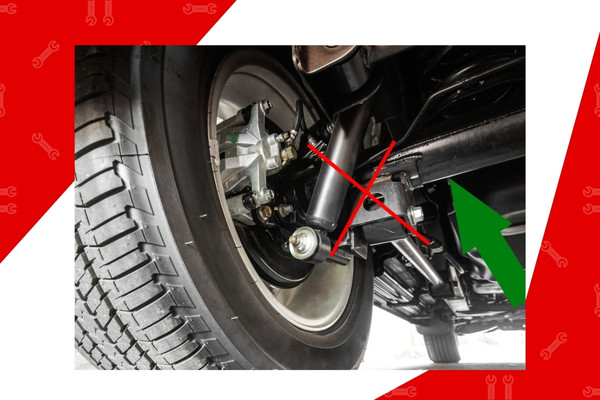
It’s a good idea to locate the ideal jack points under your lifted truck before raising it. In a nutshell, jack points are the areas that will come into contact with your hydraulic jack and any jack stands you’ve selected.
The best jack points are located around the tires. For instance, your front tires should have jack points right behind them on the frame of the truck. You should also see two jack points at the front of the axle side of the rear wheels, plus jack points near the wheels on the axle sides. On my truck, there are small rubber pads showing where you should place the jack.
Depending on your truck’s make and model, you may additionally find jack points between the front and rear wheels. Generally, lifted trucks have significantly more jack points compared to other vehicles. If you can’t easily find the jack points for your truck, browse your vehicle owner’s manual for a diagram.
4. How to Place a Floor Jack under a Vehicle?
Once you’ve located and decided on the ideal jack points for your truck, it’s time to place and set up the floor jack itself. Put the jack under the jack lift point you selected.
For example, if you want to lift the front left wheel of your lifted truck, move the jack under the left front wheel’s secure jack point, which should be right behind the wheel or wheel well.
Fortunately, because a lifted truck has a greater amount of ground clearance compared to other vehicles, you should be able to place the hydraulic jack quickly and easily. Whatever you do, don’t put your jack under a fragile component like the steering rack, pan, exhaust pipe, or other components of your truck. This will result in bending that part.
You should also ensure that the jack will always have a very secure grip on the jack point once you have raised it. That’s because once you’ve raised your lifted truck, the vehicle’s angle could change slightly. It may slip off if you don’t ensure the jack has a good grip on the point. Choosing the right jack points will ensure the vehicle rests securely on your stands.
5. How to Raise a Lifted Truck?
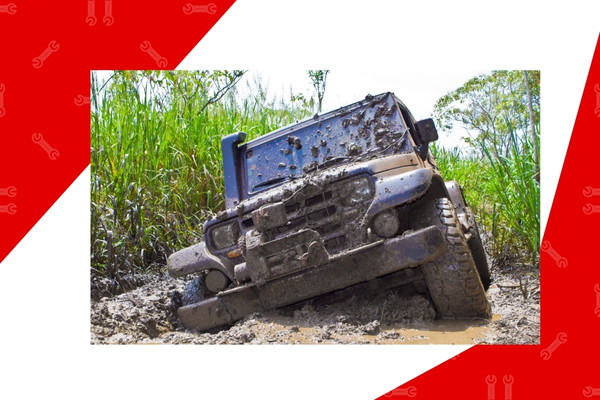
Now it’s time to raise your lifted truck so you can get to work changing the tire, inspecting the undercarriage, or doing other maintenance work. This involves raising your jack, so it physically touches the jack point, then gradually lifts your truck off the ground to one side. Remember, prior to this step; your jack should not be in contact with the jack point – there should still be a little room between the two surfaces!
Use the jack lever to raise the jack’s contact surface up until it touches the jack point. Then pump the jack several more times to continue raising your truck. Your hydraulic jack should make this easy, making you feel like quite the champion lifting your truck with the motion of your arm.
Continue pumping your jack’s lever until it lifts the truck high enough that your wheel can roll.
Once the truck is high enough, place your jack stands underneath.
6. Where to Place a Jack Stand Under a Lifted Truck?
At this point, your truck is suspended in the air, and you need to move the jack stands under your lifted truck so it can support its weight. Move one of your jack stands near the jack beneath the truck frame.
Only once the jack stand is in place, and once you know it’s ready to bear your truck’s weight should you (carefully) lower the jack so the truck settles on the jack stand. If done properly, the jack stand will capably hold your lifted truck’s weight and will barely budge.
You can repeat this process as many times as you like depending on how many jack stands you want to use. You need to use at least one, but you can use two or three if you want to completely raise your lifted truck off one side.
7. How to Lower a Lifted Truck?
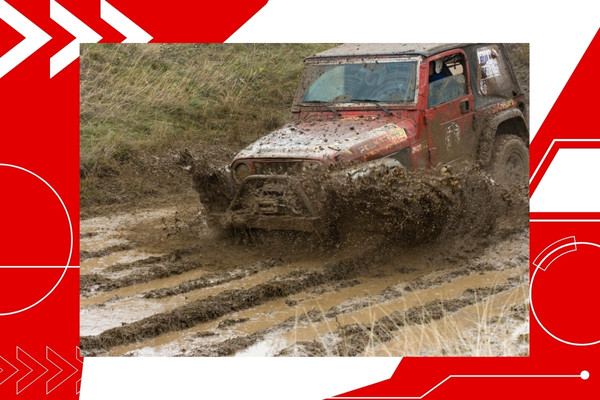
Of course, raising a lifted truck is only half the battle. You must also safely lower your lifted truck once your maintenance work is complete!
After you are done with your maintenance, flat tire change, or other work, your truck should still be resting on the jack stand that you put into place before. Bring your jack back to the same spot to lower a lifted truck right next to the jack stand. Raise the hydraulic floor jack by pumping the lever until it comes into contact with the same jack point. Pump the lever a few extra times so the truck lifts a little off the jack stand, just enough so you can move the jack stand away from the truck.
After you slide or roll the jack stand away, and open your floor jack’s release valve. The truck will slowly decline at a steady pace, allowing it to rest on all four tires safely.
Congrats! You’ve just learned how to jack a lifted truck and lower it back to the ground like a pro!
Conclusion
As you can see, jacking up a lifted truck isn’t terribly difficult, but you have to follow the above process carefully, so you don’t accidentally injure yourself or others. Be sure to gather the right tool beforehand. Find the jack points for your lifted truck. Then maneuver your chosen jack to one of the jack points and pump it until it lifts your truck off the ground.
Put a jack stand in place by the same jack point, then lower your truck slightly, so it rests on the jack stand. Remove your jack, do your work, and reverse your steps to lower your truck back to the ground. There you have it: a foolproof, safe way to jack up a lifted truck so you can perform your own truck maintenance without having to take it into the shop!
 Skip to content
Skip to content

